This review presents a rather rare version of Helios-44-3 2/58 MS from the Helios-44-X series of lenses.
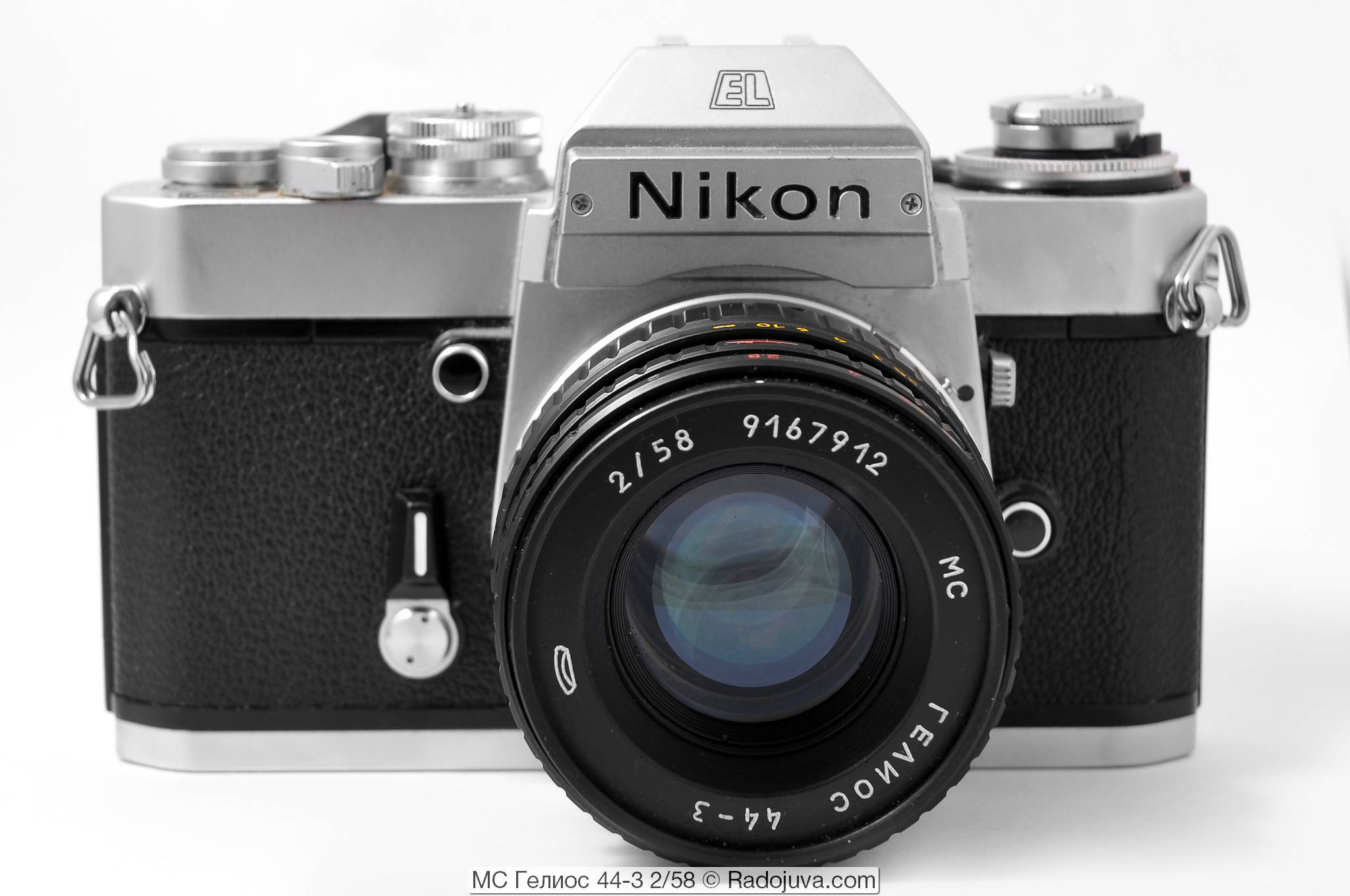
MS Helios 44-3 2/58. Lens shown on a film camera Nikon EL-2 installed using a conventional adapter M42-Nikon F
In short
MC Helios 44-3 2/58 is one of the best lenses among all versions of 'Helios-44' with manual aperture setting. This is the only lens in this series with multi-coated optics.
In general, it looks like very common options Helios-44-2 2/58 (HELIOS-44-2 2/58).
The general list of HELIOS-44 lenses can be found in the 'A Thousand and One Nights with HELIOS-44'.
The main technical characteristics of Helios 44-3 2/58:
| The name of the instance from the review (as it is written on the lens itself) | Helios 44-3 2/58 MS with the VOMZ logo; two lenses participated in the review: 8619437 and 9167912 |
| Basic properties |
|
| Front Filter Diameter | 52 mm |
| Focal length | 58 m |
| Zoom ratio | 1 x |
| Designed by | for film cameras with a frame size of 36 mm X 24 mm |
| Number of aperture blades | 8 rounded petals. Petals form an octagon of approximately regular shape. |
| Tags |
|
| Diaphragm | From F / 2 to F / 16.0, it is regulated by a diaphragm ring, there is a diaphragm preset ring. The aperture can be adjusted smoothly, without clicks. |
| MDF (minimum focusing distance) | 0.5 m |
| The weight | 250 g |
| Optical design | 6 elements in 4 groups |
| Lens hood | screwed into the front filter, marking of the original hood not found. |
| Manufacturer country | USSR, made at the Vologda Optical and Mechanical Plant |
| Instructions | My scan |
| Period | Around 1983 (?) To 1995 (?) |
MC Helios 44-3 2/58 is well built, but from the obvious shortcomings I can note the following:
- the chamfers of the lenses are not blacked out, which adversely affects the contrast of the image
- aperture blades are not blackened, which adversely affects image contrast on covered apertures
- micro-play of the aperture setting ring, but this does not affect the performance or usability of the lens
- the lens hood is screwed into the thread of the front light filter, and is not installed in the bayonet grooves, as in modern lenses. Although, for that time, I do not know any similar lens with a bayonet type hood
- focus ring design poorly compatible with adapters. This trouble will be described in detail below and it relates more to adapters / adapters than to lens flaws
- at F / 4-F / 16 values, the aperture blades form an insufficiently round hole
- For Soviet lenses, a characteristic feature is the presence of a focus distance scale only in meters (metric system). Some Western users may complain about this.
- the focus ring is too close to the mount, it is not always convenient to work, especially when used on some modern cameras, for example, equipped with a battery grip
The focus ring is metal, not rubberized, rotates approximately 270 degrees, the stroke of the ring is smooth. During focusing, the front retractable body does not rotate. Focusing occurs by moving the entire lens block.
MS Helios 44-3 2/58 has a ring presets diaphragm. It allows you to select one of the fixed values: F / 2, 2.8, 4, 5.6, 8, 11, 16. Unlike the preset ring, the aperture setting ring rotates smoothly and can be used to set any intermediate value. The smooth movement of the aperture ring is useful when shooting video. The diaphragm consists of 8 blades that form a hole in the form of regular octahedrons.
Helios 44-3 2/58 MS has an unusual for the Helios-44 series lenses red-yellow marking of the aperture and focusing distance.
The difference between the lenses of the Helios-44-X series and the Helios-44 seriesМ-X is that versions without letter 'М'in the name of the lens do not have a jumping ('Мaperture), therefore, the diaphragm on such a lens works only in manual mode. Such lenses are more convenient to use on modern digital cameras (there is no need to block the mechanism of the aperture jumping device for manual control). Lenses with an 'M' in their name, such as HELIOS-44M 2/58, have a jumping (blinking) diaphragm mechanism and do not have a manual diaphragm control mode (the diaphragm is always open until the diaphragm pin on the bayonet side is pressed).
MS Helios-44-3 is interesting in that it has multi-illuminated optics, as indicated by the letters MS in the name of the lens (МultiproСbranching). MS versions are rare, and usually these are Helios-44 lensesМ-X, not Helios-44-X series.
Difficulty using with adapters
MC Helios-44-3 2/58 has one very characteristic and unpleasant feature. When using the adapter, which is screwed onto the native thread of the M42, it rests against the focusing ring and locks it (the focusing ring cannot be rotated). There will be serious focusing problems with any 'M42-desired mount' adapter. I only observe this design of the focusing ring on MC Helios 44-3 2/58. To treat this ailment, either cut the back of the focusing ring a little or use a homemade thin spacer between the focusing ring and adapter.
It's important: all lenses manufactured before 1991 suffer from this ailment. After 1991, the lens was finalized and its use with adapters / adapters does not cause any problems.
Important: Helios-44-3 MS 2/58 using a conventional adapter M42-Canon EOS can catch a mirror full-frame Canon EOS cameras. So MC Helios-44-3 2/58 clings to the mirror of my Canon EOS 5D camera during focusing from infinity to 6 meters. FROM cropped Canon EOS camerasas well as mirrorless cameras Canon M, Canon r there will be no problems.
Image quality
Due to the use of multi-brightening, the color rendition of Helios-44-3 2/58 is better than some other lenses of the Helios-44 family, which can spoil the color rendition with a parasitic greenish or yellowish tint. Also, Helios-44-3 2/58 MC behaves a little better in back and side light and generally creates a more contrasting image than it can be assembled without multi-enlightenment. Unfortunately, due to the fact that the chamfers of the lenses are not blackened, and the aperture blades are also not blackened, excessive re-reflection can reduce the image contrast, especially in the same backlight and side light. In real shooting conditions, sometimes you have to add contrast to the pictures.
The lens is sharp enough in the center of the frame already at F / 2.0. There is a noticeable drop in resolution to the edges and corners of the frame. Covering the aperture by 1-2 steps of the edge and the corners of the image are slightly aligned.
Many users love Helios lenses for the optical design of the Biotar / Biotar type with 6 elements in 4 groups, which in some cases creates a pleasant looking picture. The main feature of all Helios-44 lenses is the special nature of the out-of-focus zone - twisted bokeh... From a technical point of view, this feature is an optical flaw, namely, geometric vignetting, but from an artistic point of view it can act as an additional technique to create a pleasant picture.
Sample Photos
Photos on Nikon D40 without processing, JPEG L Basic. On Nikon cameras, I used the lens with a regular adapter M42-Nikon F.
Photos on Canon EOS 5D converted using Canon Digital Photo Pprofessional 4 (Canon DPP) with minor adjustments. On Canon EOS cameras, I used the lens with a regular adapter M42-Canon EOS.
Original photos on Canon EOS 5D can be download from this link... Several photos can be found more here.
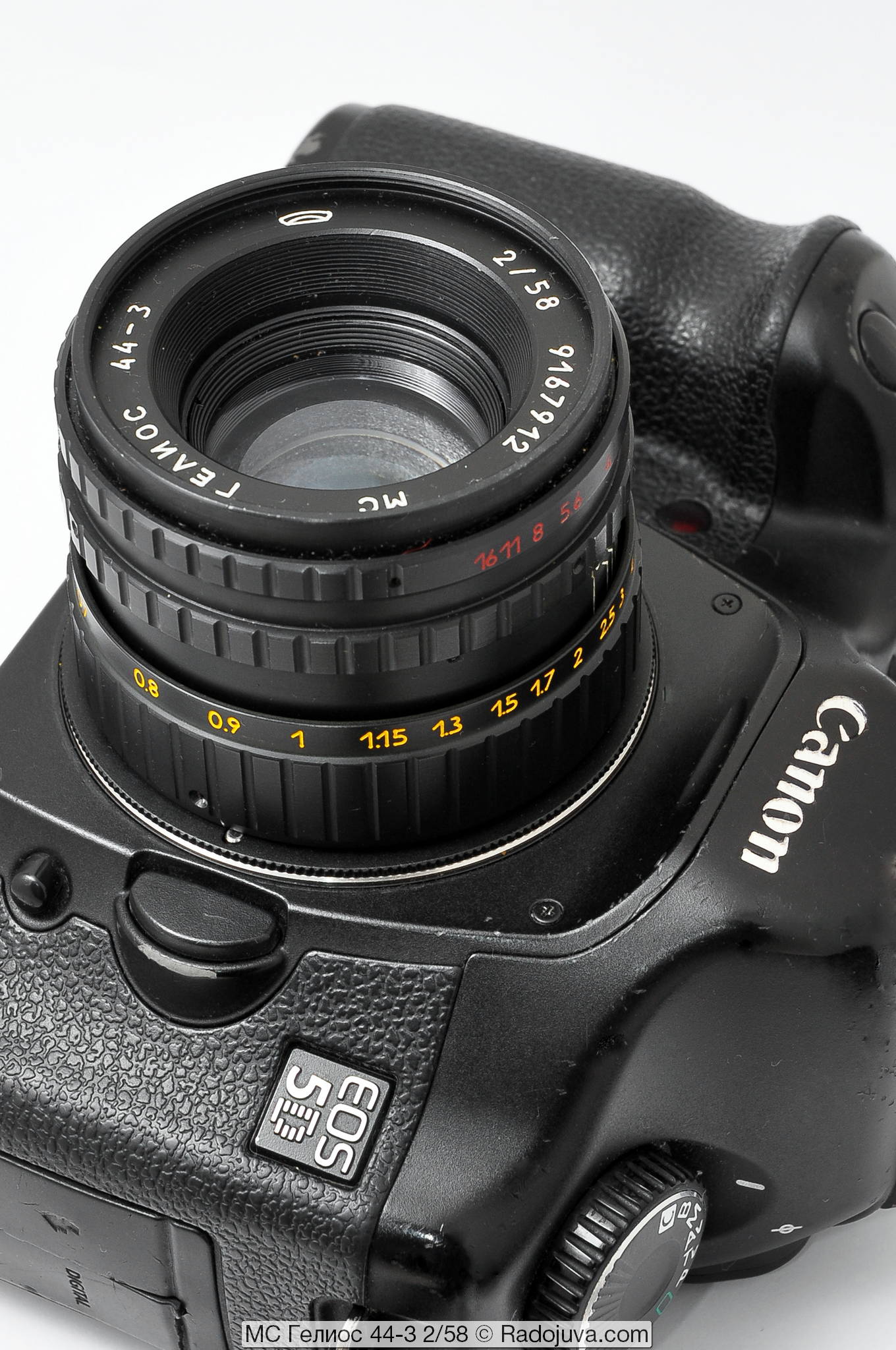
MS Helios 44-3 2/58. On a Canon EOS 5D full frame DSLR I used this lens with a simple adapter M42-Canon EOS
My experience
Of all the tried and tested lenses of the Helios-44 family, this Helios-44-3 MS 2/58 has personally sunk into me the most. I had several copies that I used in different years of my photo practice, all of them were good. Even problems with the use of adapters could not prevent sympathy for the Helios-44-3 MS 2/58. At the same time, for many years I tried a whole bucket of Helios-44-2 (about 10 different copies, different plants, different years of production) and not one of them stuck with me.
Personally, I believe that the Helios-44-3 2/58 is the best lens in the Helios-44 line without a blinking aperture. This is my personal opinion, it may not coincide with the opinion of other users. If in Helios-44-3 2/58 there were 13 petals, as in earlier versions of Helios-44, then he would not have a price.
Typically, Helios-44-3 2/58 MS is significantly more expensive than Helios 44-2 2/58. Despite his love for Helios-44-3 MS 2/58, they are not chasing after him. You can safely get acquainted with Soviet optics starting with Helios-44-2 2/58.
Comments on this post do not require registration. Anyone can leave a comment. Many different photographic equipment can be found on AliExpress.
Reviews for the Helios-44 2/58 lenses:
- Helios-44 2/58 [KMZ, 13 petals, M39, silver, No. 0220423]
- Helios-44 2/58 [KMZ, 8 petals, M39, silver]
- Helios-44 1: 2 F = 5,8 cm П [KMZ with replaced lenses, No. 0007220, review of the lens from the reader Radozhiva]
- HELIOS-44M 2/58 [KMZ, 8 petals, serial number 7843528]
- HELIOS-44M 2/58 [Jupiter plant, Valdai, 8 petals, serial number 8027170]
- HELIOS-44-2 2/58 [plant 'Jupiter', Valdai, 8 petals, serial number 83052779] + autofocus review
- MS Helios 44-3 2/58 [MMZ, 8 petals, 8619437, 9167912]
- MC Helios-44M-4 2/58
- Helios-44K-4 58mm 1:2 [KMZ, 6 petals, Pentax K]
- MC Helios-44M-4 58mm 1: 2 [plant 'Jupiter', Valdai, 6 petals] + autofocus review
- MC Helios-44M-5 58mm 1: 2 [Jupiter plant, Valdai, 6 petals]
- MC Helios-44M-6 58mm 1: 2 [plant 'Jupiter', Valdai, 6 petals]
- MC Helios-44M-7 58mm 1: 2 [plant 'Jupiter', Valdai, 6 petals]
- An article about most of the major modifications of the Helios-44 series
- Gallery of pictures on MC Helios-44M-4
- Look at modern the lenses 'Helios' can at this link
- A lot of Helios of all varieties can be found on ebay this link
Original 'Carl Zeiss Jena Biotar 2/58 ':
- Carl Zeiss Jena Biotar 1: 2 f = 5,8cm T [17 diaphragm blades, M42]
- Carl Zeiss Jena Biotar 2 / 58 T [12 diaphragm blades, M42]
- A lot of Biotars of all varieties can be found on ebay this link
Look at modern the lenses 'Zenitar' и 'Helios' can at this link.
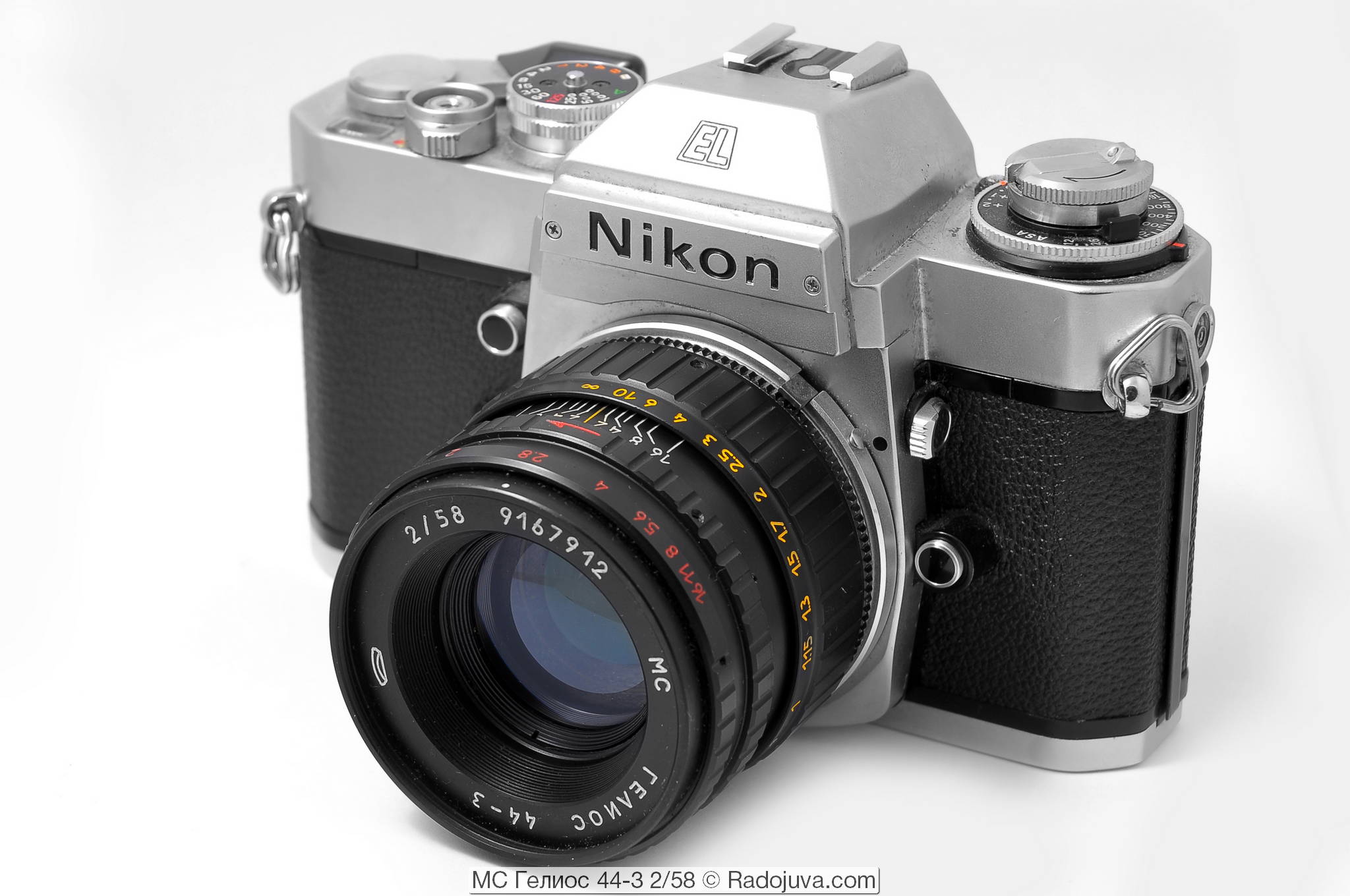
MS Helios 44-3 2/58. Lens shown on a film camera Nikon EL-2 mounted using a conventional adapter M42-Nikon F
Conclusions
MC Helios 44-3 2/58 is a good standard (in terms of focal length) fast lens. Some units are difficult to use on modern digital cameras due to the unusual design of the focusing ring, which complicates the use of adapters. Many amateur photographers use lenses of the Helios-44 family for a very wide range of photographic tasks, but they are mainly bought for creative photography, and in particular for creating a twisted bokeh effect.
Material prepared Arkady Shapoval. Training/Consultations | Youtube | Facebook | Instagram | Twitter | Telegram

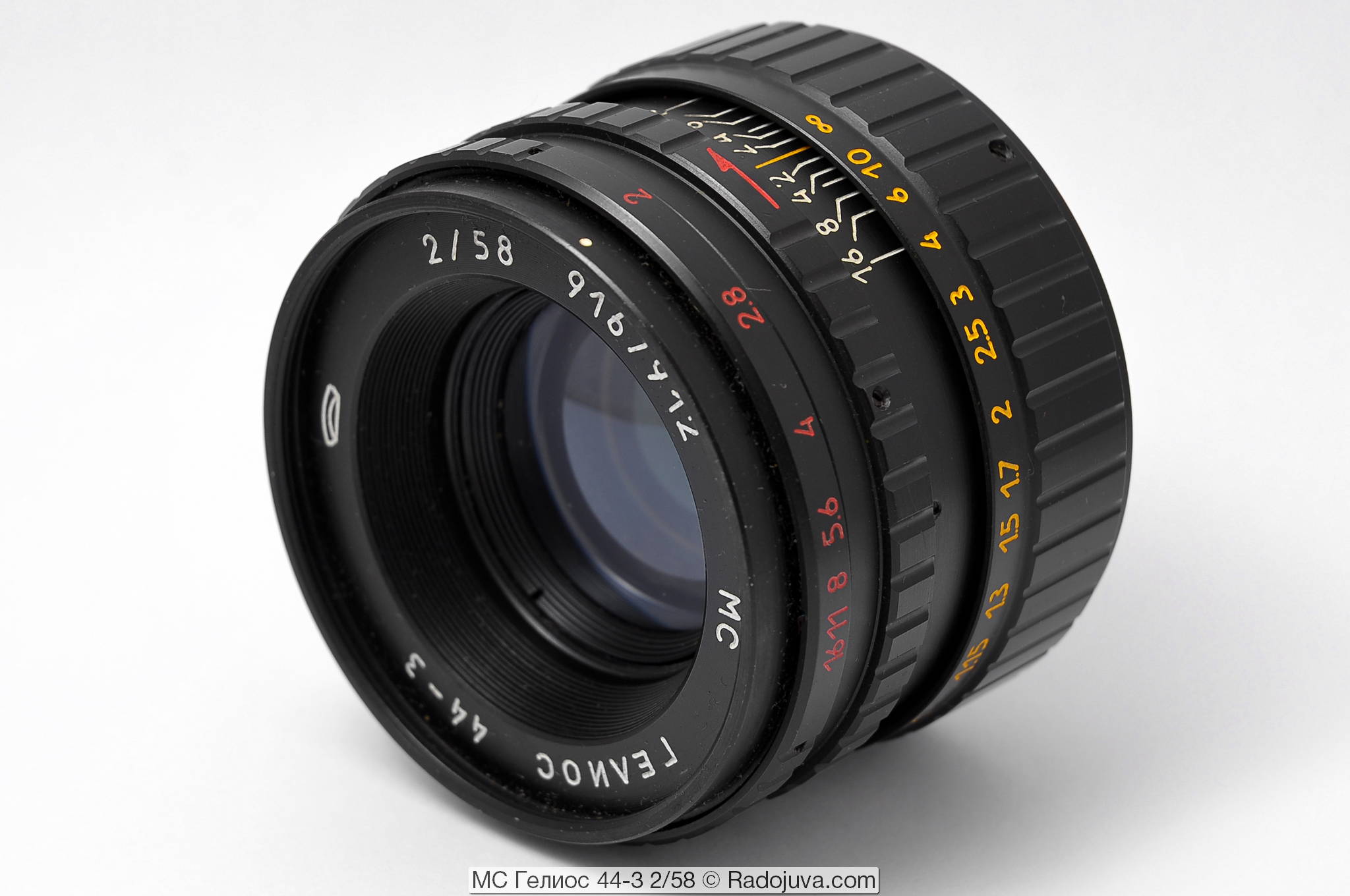

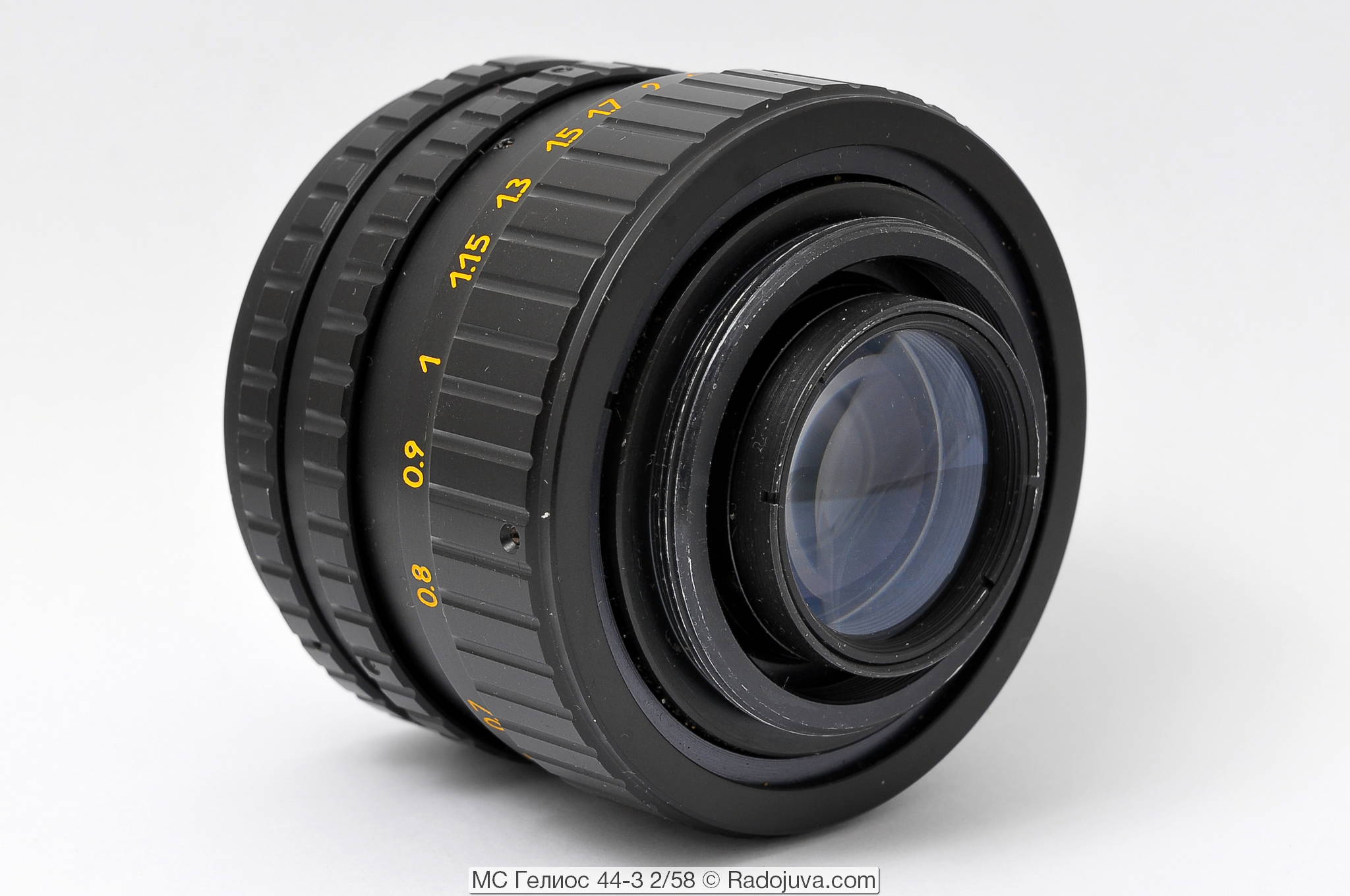
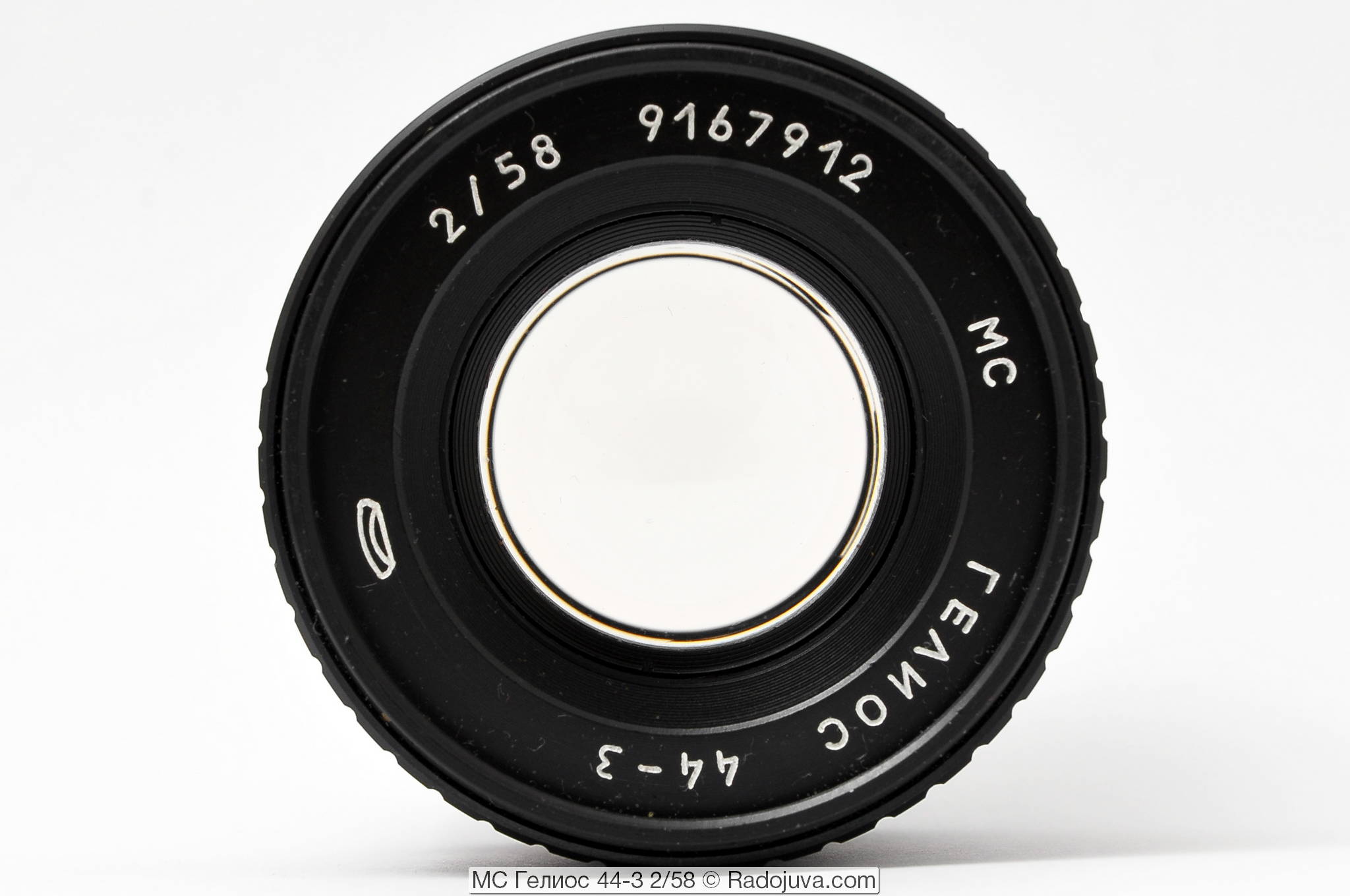
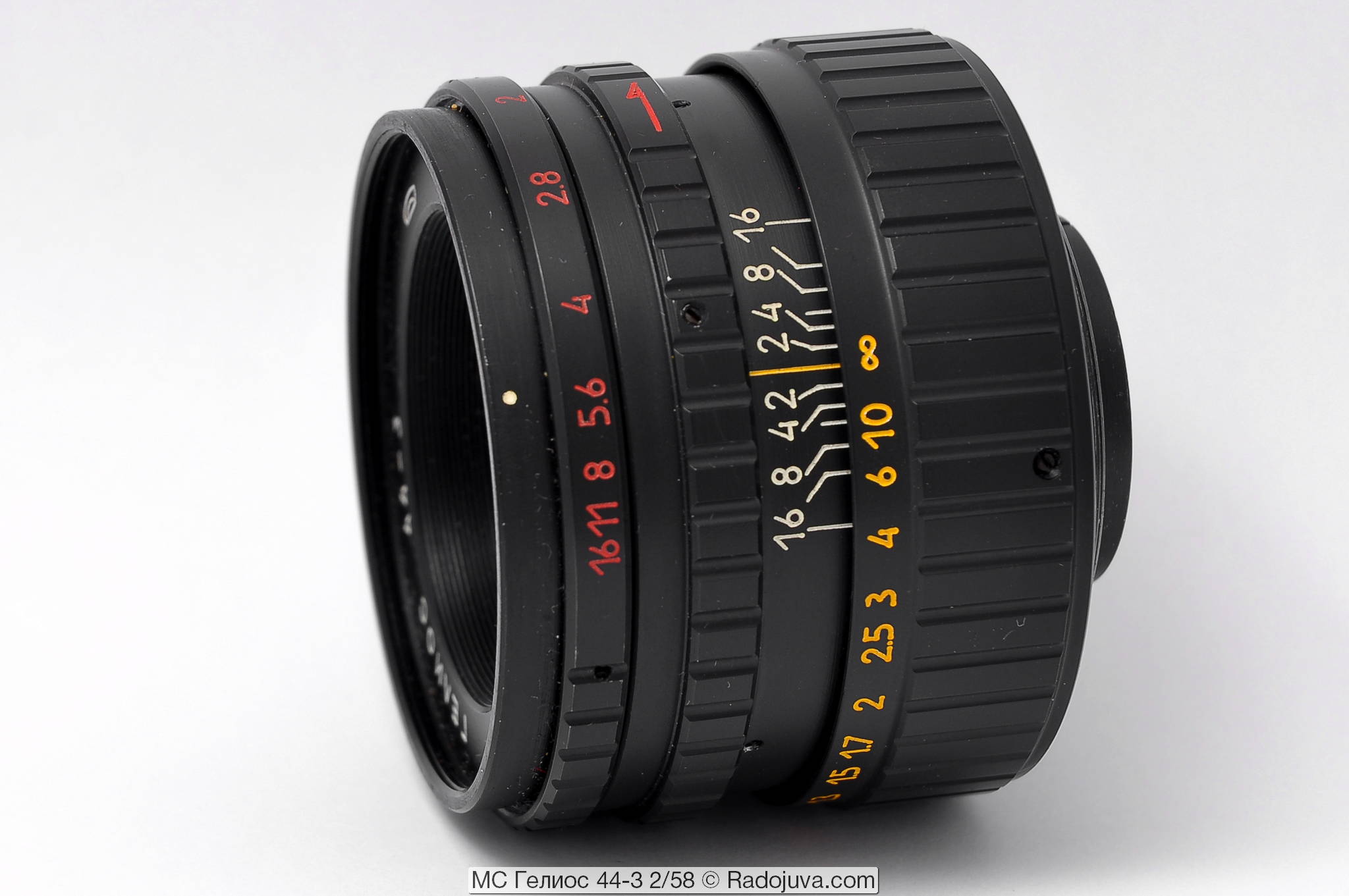

























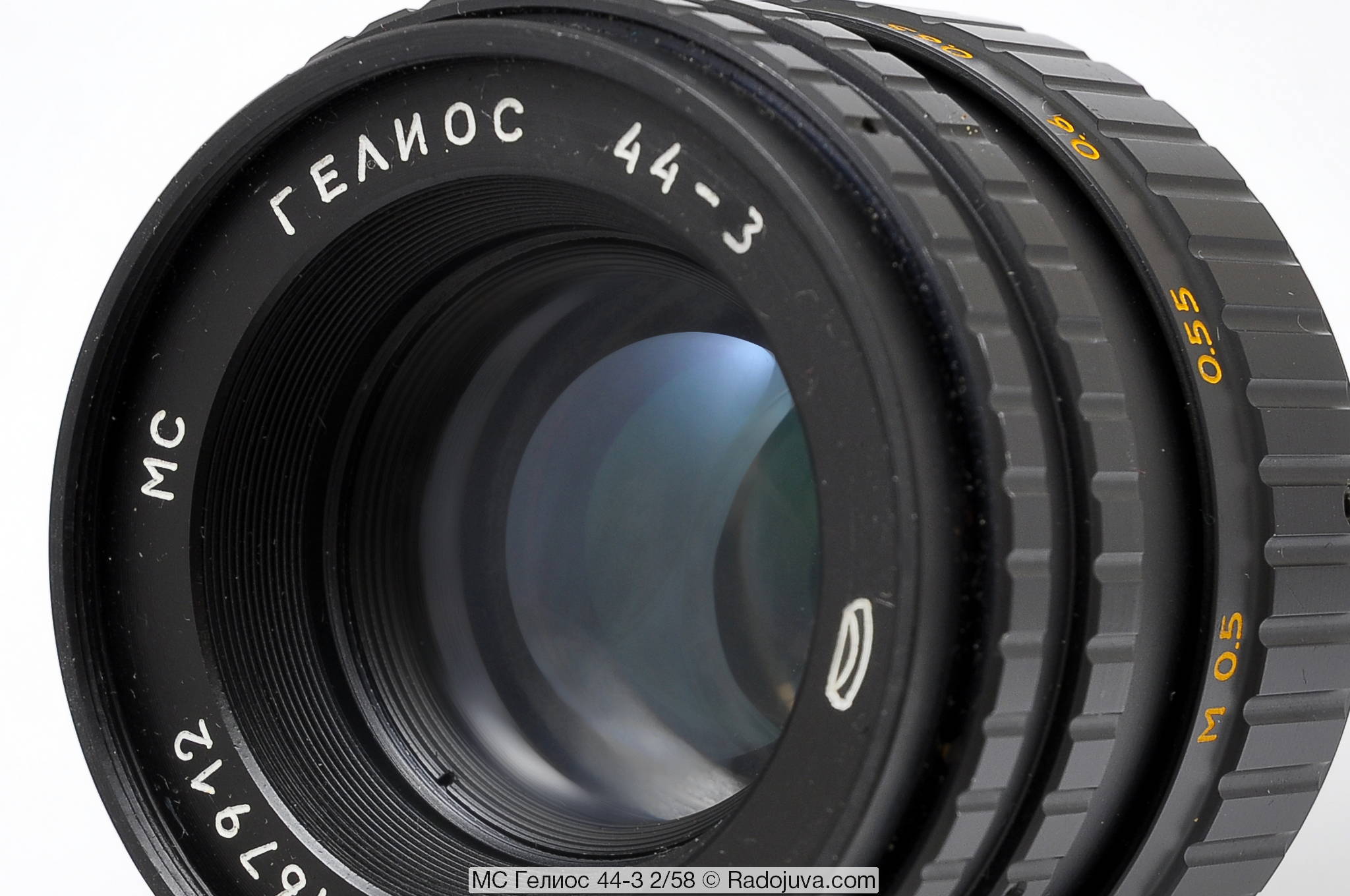
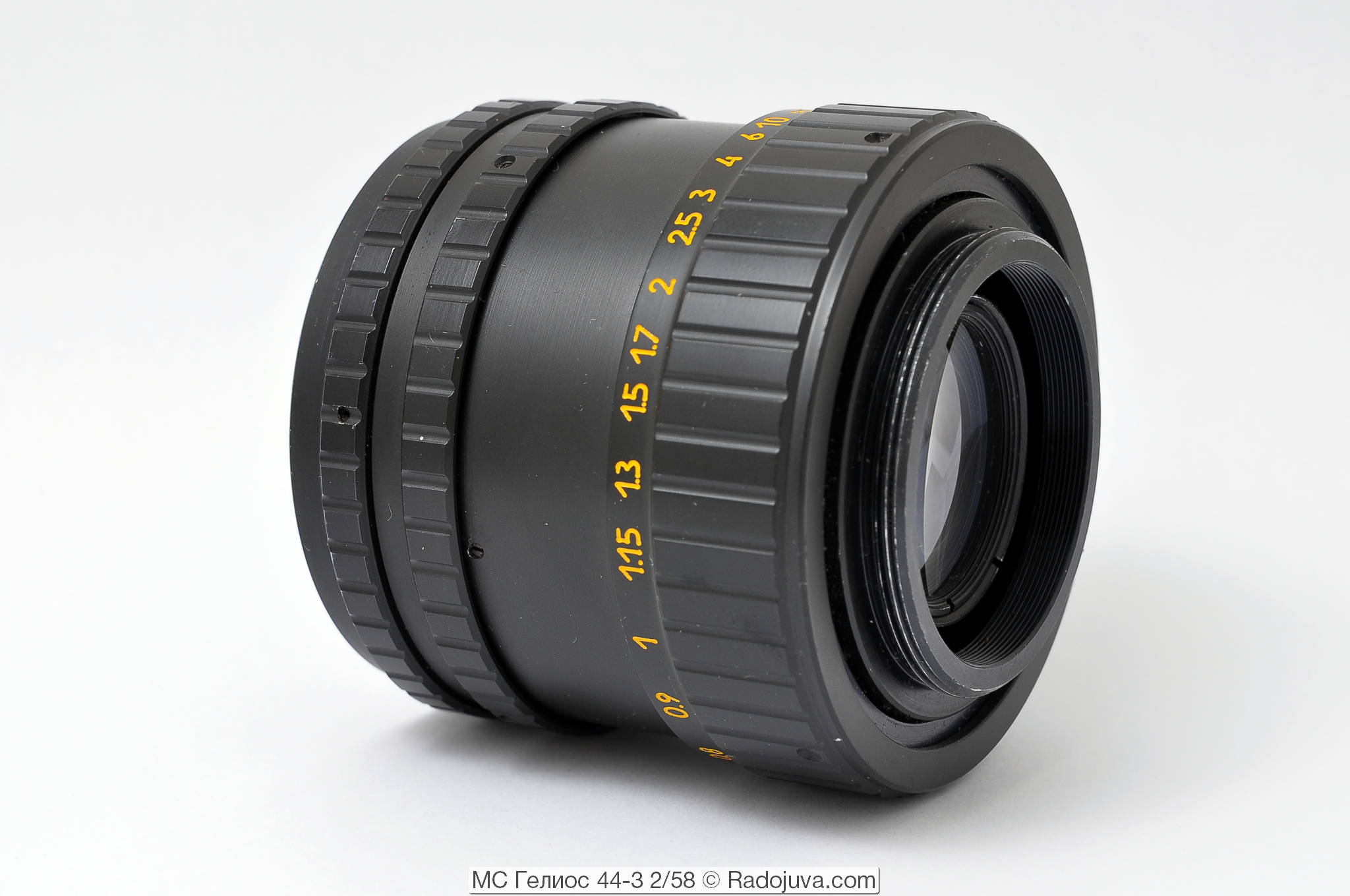
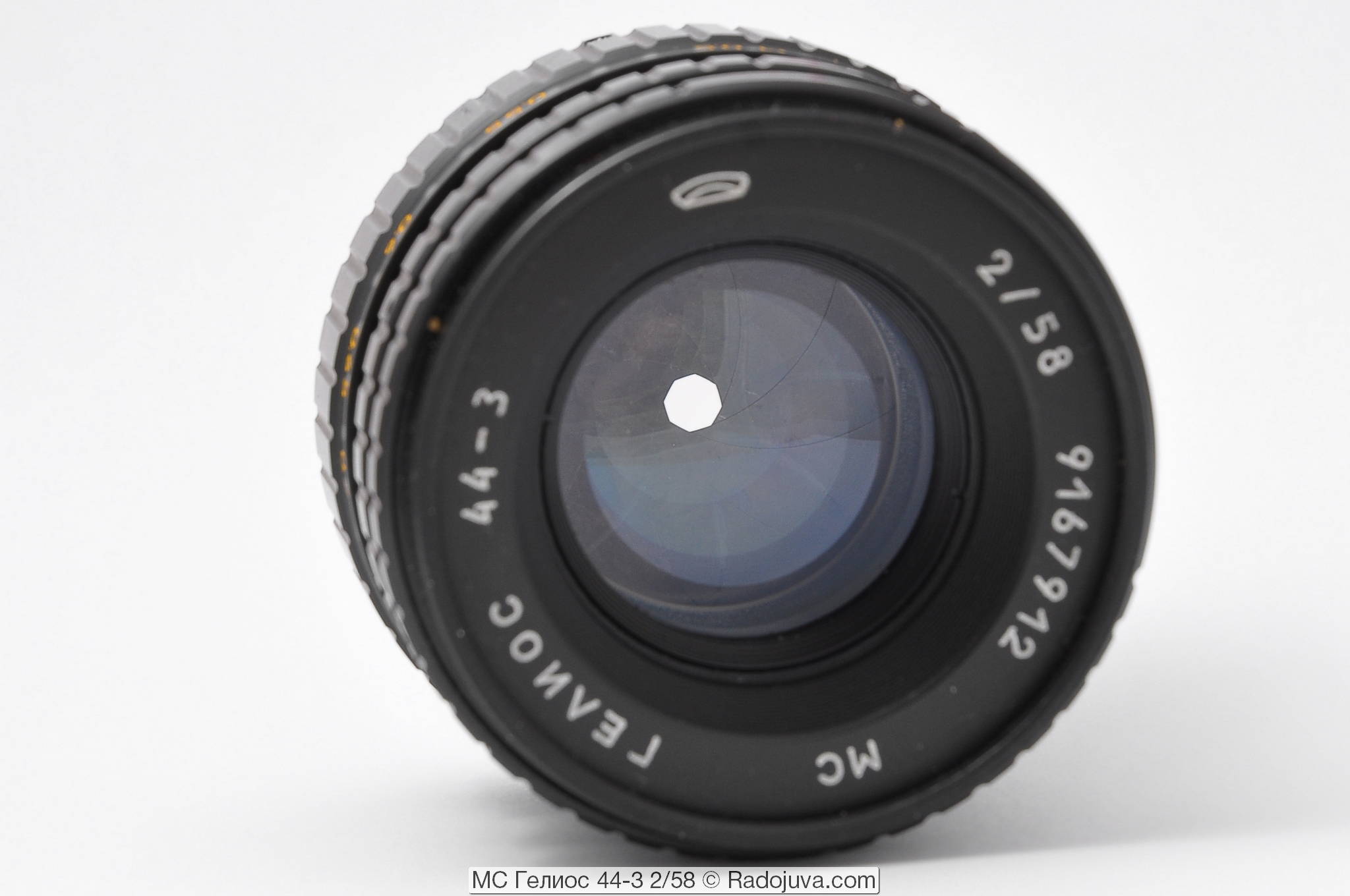
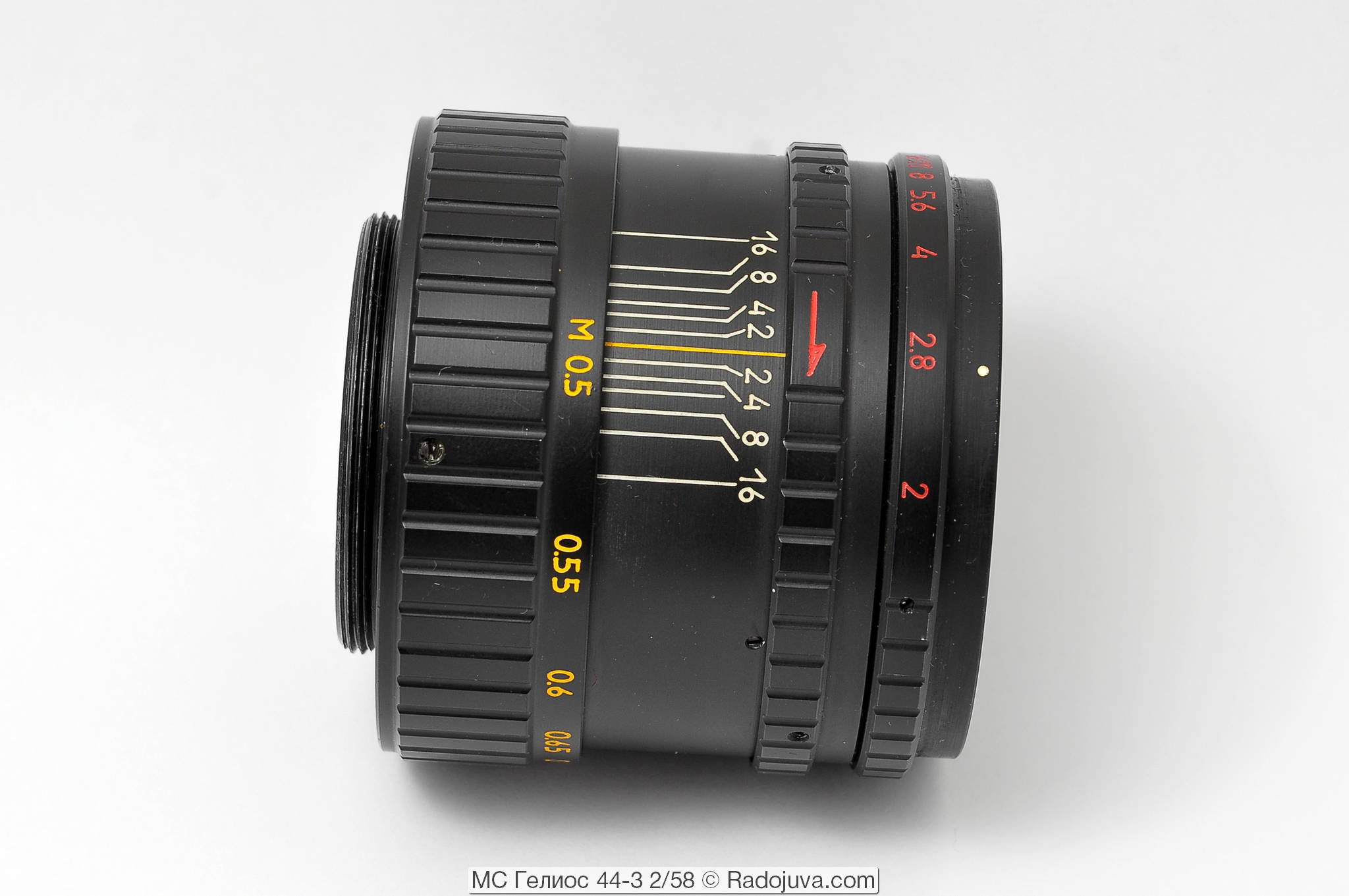
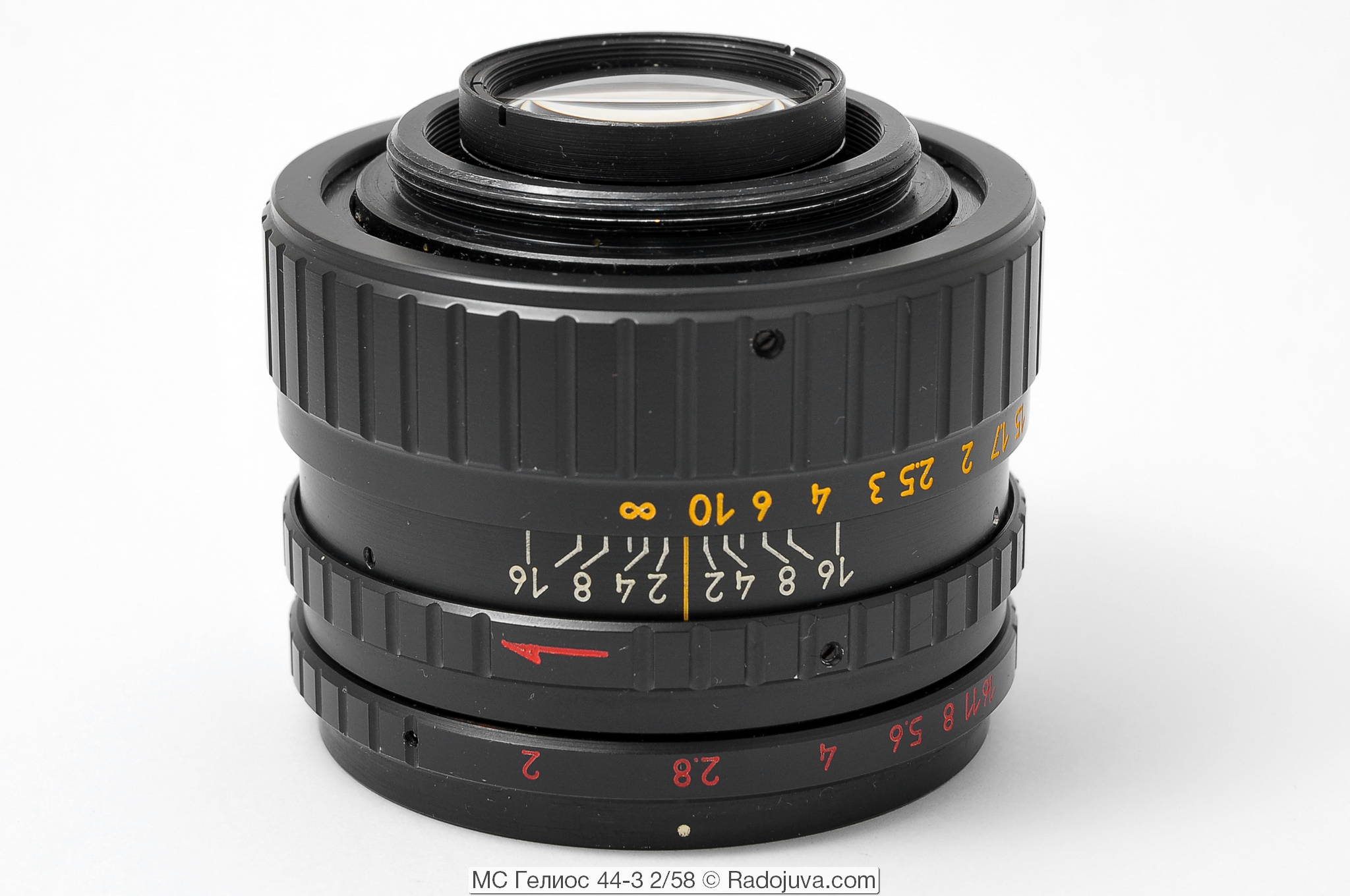

Strange kind of review. In fact, there is nothing special to write about, the Helios-44-3 2/58 lens is an almost complete copy of Helios-44-2. The main differences between the lenses relate to the following points. Factories manufacturers
Frame rim
Different type of enlightenment
And the fact that the diaphragm of 8 petals versus six in the G-2 is nothing to write about? Helios-3 against Helios 2, like heaven and earth, but there’s nothing special for a friend to write about. In general, the reviews of this young man became uninteresting.
Yes, but the comments of anonymous people are more and more interesting every time ...
But the author of the three letters is not anonymous.
Agree
My Helios 44-2 has 8 aperture blades. Belomo Plant.
No Helios 44-2 has 6 aperture blades. Only 8.
I have Helios 44-2 MMZ 74 years old, the diffraction pattern is 8 petals \ not at all 6 \
Vikoristovuyu daniy ob'ktiv on Sony A100, the adapter is not a block of regulation.
Z danim about ”ktiv kolyus having bought a new Zenit-ET long ago. From the factory, not working to endlessness, it was assumed in the mains, having twisted yogo to alpha. It should be more like me.
Hello!
Thanks for the review, as a beginner, I'm interested in everything! I bought Helios 44-3 a couple of days ago, I'm very happy. If you can, tell me: are there adapters in nature for installing canon lenses on a Sony SLR (system A). I can't find them anywhere, maybe they are not at all? I find only mirrorless (system E) ...
The working length of the canon is shorter, so the installation is problematic. Perhaps there are linzovannye adapters.
Under Sonya, it’s good to use the Minoltov heritage, which has its own unique character.
Kenon's flange is 44 mm, and Nikon's is 46.5 - almost no manual one can be used without sawing on Nikon.
Well, or put a Chinese adapter with a plastic lens - and goodbye to the quality of the picture. So, you don't have to carry the bullshit for Canon)))
pictures from this lens. Gee.
http://www.flickr.com/photos/greenmuar/sets/72157654097971169
I am very pleased with the purchase of this glass. Just insanely happy!
I personally “sunk into my soul”) Helios-44m is very convenient to use and, in my opinion, the best sharpness of all the Helios that have been tried (I had a lot of them).
2nd photo with a single leaf, wonderful! Apparently a really decent lens.
An excellent overview ... And just for the sake of these optimistic lines of respected Arkady - it is interesting to purchase this MS Helios-44-3 2/58 lens ... :)
… ”Of all the lenses of the Helios-44 family that have been tried and tested, this MC Helios-44-3 2/58 has sunk into my soul the most. I had several copies that I used in different years of my photography practice, they were all good. Even problems with the use of adapters could not prevent them from imbuing with sympathy specifically for MC Helios-44-3 2/58. At the same time, for many years I have tried a whole bucket of Helios-44-2 (about 10 different copies, different plants, different years of production) and none of them have caught on with me.
Personally, I think that MC Helios-44-3 2/58 is the best lens in the Helios-44 line without a blinking aperture. This is my personal opinion, it may not coincide with the opinion of other users. If MC Helios-44-3 2/58 had 13 petals, like the earlier versions of Helios-44, then there would be no price ”...
I have two such Helios-44-3 2/58 MSs, manufactured in 1985 and 1991. In the 1985 version, the aperture is blackened better than in 1991. I use a Nikon D7000 with a 42 mm thick Chinese M0.9-Nikon adapter. The 1985 lens has no problems with the focusing ring and adapter, everything is spinning fine, nothing is blocked. In the 1991 lens, after screwing on the adapter, the focus ring rotates a little tight, but does not block. Replacing the adjustment ring allows you to focus on 3,5 and 4 meters. I use to shoot portraits. Of all the available Helios 44, 44-2, 44M, 81H (there are more than a dozen), these two 44-3 are the best in terms of sharpness and picture quality.
I have Helios 44-2 of the 89th year of manufacture with Belomo, 8 aperture blades, the body exactly like the lens from this review. Is it true that from 44-3 it differs only in the absence of multi-enlightenment?
I like the picture from it, I compared the sharpness with Industar 50-2 and Helios 77M-4 on the printed world - both are much inferior to 44-2 :)
But focusing is really inconvenient, in this regard, the 77th was much more pleasant
I bought this lens only 93g. Issue for testing, for comparison with the existing helios 44-2 81g with an arrow crossing a circle Without enlightenment. What is interesting is that without enlightenment it transmits more light with the same iso.
And for this lens 44_3 that in the article he himself didn’t understand why more noise. With a 100W light bulb, the colors are dumb. On this wave, the old sell changed his mind ..
I forgot to finish it, and there it can be seen on the test photos that the picture is tough. What portraits should they do if he even underlines bruises under the eyes and problem areas of the skin. Black as if after Threshold
Vyacheslav, the picture is hard because it was filmed during the day, and to get a soft one, you need to shoot two hours before sunset or after dawn. All Helios are good! Another thing is that not all users have even hands. Well, with the build quality of the next series, too, as luck would have it. Here I shot a portrait of MC Helios - 44M-6 / Canon EOS 600d. Shooting time - 19 hours. 20 minutes.
Judging by the logo on the lens presented in the review, it was produced at MMZ
(Minsk Mechanical Plant named after S.I. Vavilov), and not at the Vologda Optical-Mechanical Plant
Yes, and the scan instruction confirms: https://radojuva.com/wp-content/big/helios-44-3-manual.jpg
Error in description. 44-3 was produced only in Minsk. This modification was developed at the Belomo factory by Vavilov and was only produced there. correct the description.
Hello. There is such a lens, 86 model year. I use it with a carcass Kenon 550d; mdf = 40cm, flu less than 1cm in a fully open diaphragm; focuses on infinity. Is this the case with the lens? It feels like the lens is a little farther away from the carcass.
Recently I came across such a lens 90th onwards The adapter got up nicely on the Nikon, the focus ring does not rest and is not blocked, does not catch anything and does not rub. Everything works perfectly.
I haven’t taken a photo yet, I want to try it soon.
In 1989, I bought an original plastic hood in Leningrad, it is put on (fitted) on the front part of Helios ms44-3. For the M42-NX adapter, the turner removed 0,8mm from the edge to the rotary insert and now the lens focusing ring rotates correctly. The same can be done with other mirorless camera adapters. In addition to Samsung nx1 and nx300, I also have a Sony nex-5t, its adapter is similar to the nx. With Sony A-muont it won't work - a thin ring. The lens is really better than the rest of the G 44, so I have two of them. It’s a paradox, but the masterpiece optics nx 16-50mm f / 2-2.8 and nx 50-150mm f / 2.8 and even nx 45mmf18 2d / 3d are not much apart from Helios MC 44-3 in a portrait photo. But for these two, you can really buy a bucket of Helios!
Good day. For a start, a special thank you to the author for the article ... But there is one question left, I ask you to clarify: As I understand it, the 44-2 lens was initially produced at MoMZ in a new housing with single-layer coating and it seemed to be better than the 44-2 made in Russia. Later they released 44-3 with multi (two-layer) coating. If not right, please correct me. Since I want to buy this model of Minskers, but I don’t know how much the first 44-2 (III) differ from the next 44-3. Yes, and I would like to clarify the difference between Misquis 44-2 and Russian ones, except for the case ...
I purchased this lens. The condition looks close to ideal, but there is a strong play in the diaphragm ring. I have no experience in repairing / adjusting lenses at all, but I would like to know how this can be fixed. There are three screws on the ring - trying to tighten them is the right train of thought, or have they nothing to do with it?
Only if the ring along the lens dangles, and so the train of thought is wrong. Rodion needs this for consultation
The lens unit is designed in the same way as the 44-2. If the ring dangles longitudinally, then, indeed, you can fix it with screws. If the backlash in the direction of the ring rotation is more interesting. Then you need to unscrew the lens (just like Helios-44-2) counterclockwise onto the helicoid and lens unit and see what has come off the screws.
The ring dangles in the direction of its rotation, while the diaphragm itself is stationary (but works properly in the general case).
The ring does not play along the axis of the lens.
Recorded on video, the sound conveys what is happening well:
https://www.youtube.com/watch?v=ZXy9dk6f3kI
Most likely this is a build error. The ring was attached 1-2 mm in the wrong place. It is unlikely that you will be able to fix this yourself.
Just got this masterpiece! I am absolutely delighted! I came across a copy in a new state, probably from storage in a native tube in 1984. But I have no problem with the focuser touching the adapters - nothing interferes and does not rub. Works without problems with the Nikon-M42 lens adapter, and even with the flat lensless Sigma SA-M42. Although all the owners write that the focuser problem is only on early versions up to 90 .. I filmed it on the unique Sigma SD10 of 2003 - it's just hard guys, my jaw dropped, divine smooth rendering like on top glasses for SA with eye-catching detail! No color shift or soap.
Can you show examples of pictures from which the jaw dropped?
And then my copy of '93 disappointed me - according to the test table, it turned out to be less sharp than the unremarkable Helios-44M. I'll leave it at 44-3 anyway because of the color rendering though.
Hello everyone. I have had this for a long time. Photos from him are really some special, lamp or something. It's like with sound - there is a number, but there is vinyl ... I did the adjustment to infinity for it myself (it turned out to be almost not difficult). Nikon D300 is the best!)) I shoot it when I want something "wow". Although I have other autofocus and manual glasses. By the way, according to the picture, it turned out to be much better than the Helios 81H. In my opinion. Therefore, 81H was sold.))
This photo seems to have been taken on the Nikon D3000. In Crimea ...)))
Photo class.
Oh thank you!)
Hello, russian friends!
I'm the happy owner of a '91 44-3. I really love this lens, since I took some of my best pictures with this one.
I previouly used a Canon 40D or 60D camera with an adapter without any problems. But as I now use a Canon 5D Mk1 camera, it seems that the mirror touches the lens at its base.
Did anybody met the same problem? How could I solve it?
Thanks,
Didier, with love from France
Yes, some FF Canon DLSR has this issue. Just don't use infinity focusing
I have this 90th Helios on Canon 30D, with a usual adapter chip.
The focus ring is not clamped and the diaphragm is blackened. Great lens.
Tell someone used a sample MC Helios 44-3 released before 91g. with a micro 4/3 system?
How are you doing with the adapters in this case? Is it getting up normally? And are there any inconveniences with those Helios that were released before 91?
Hello. Please tell me if you can use this old version lens with this adapter
https://a.aliexpress.com/_mMyirOH ?
It seems to have a small protrusion at the lens mount.
I used Dollice adapters (ADPLO store) - 44-3 got up without any problems. The same can be said about the Kecay adapters.
The quality of both is an order of magnitude higher than that of Fotga, and is catching up to the K&F level: good metal, decent blackening (with the latter, Kecay has flaws, I will estimate it by 3-4 out of 5 points). I have not seen any flaws with a focal segment and centering.
PS I use K&F Konica AR on Fuji X - no complaints